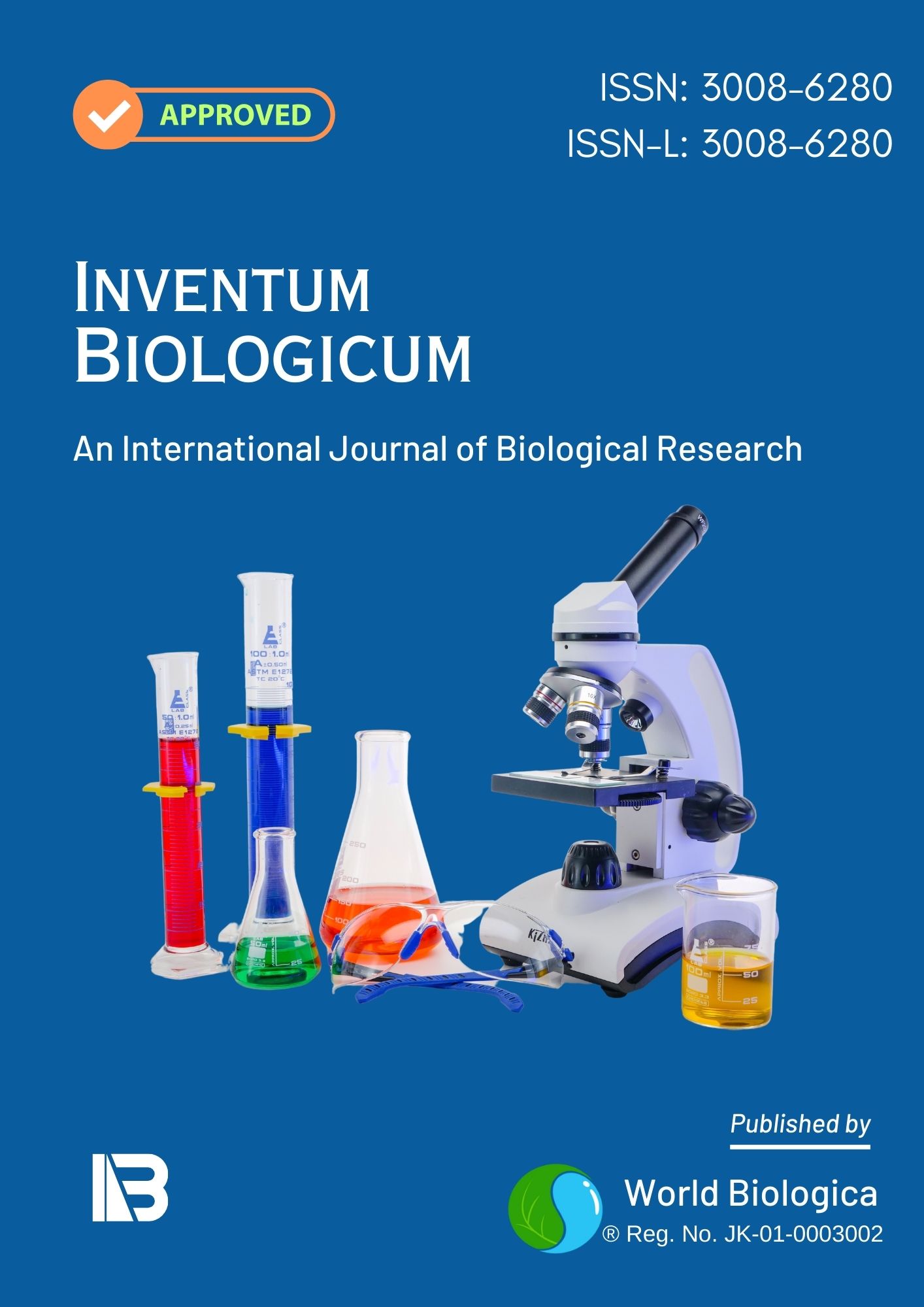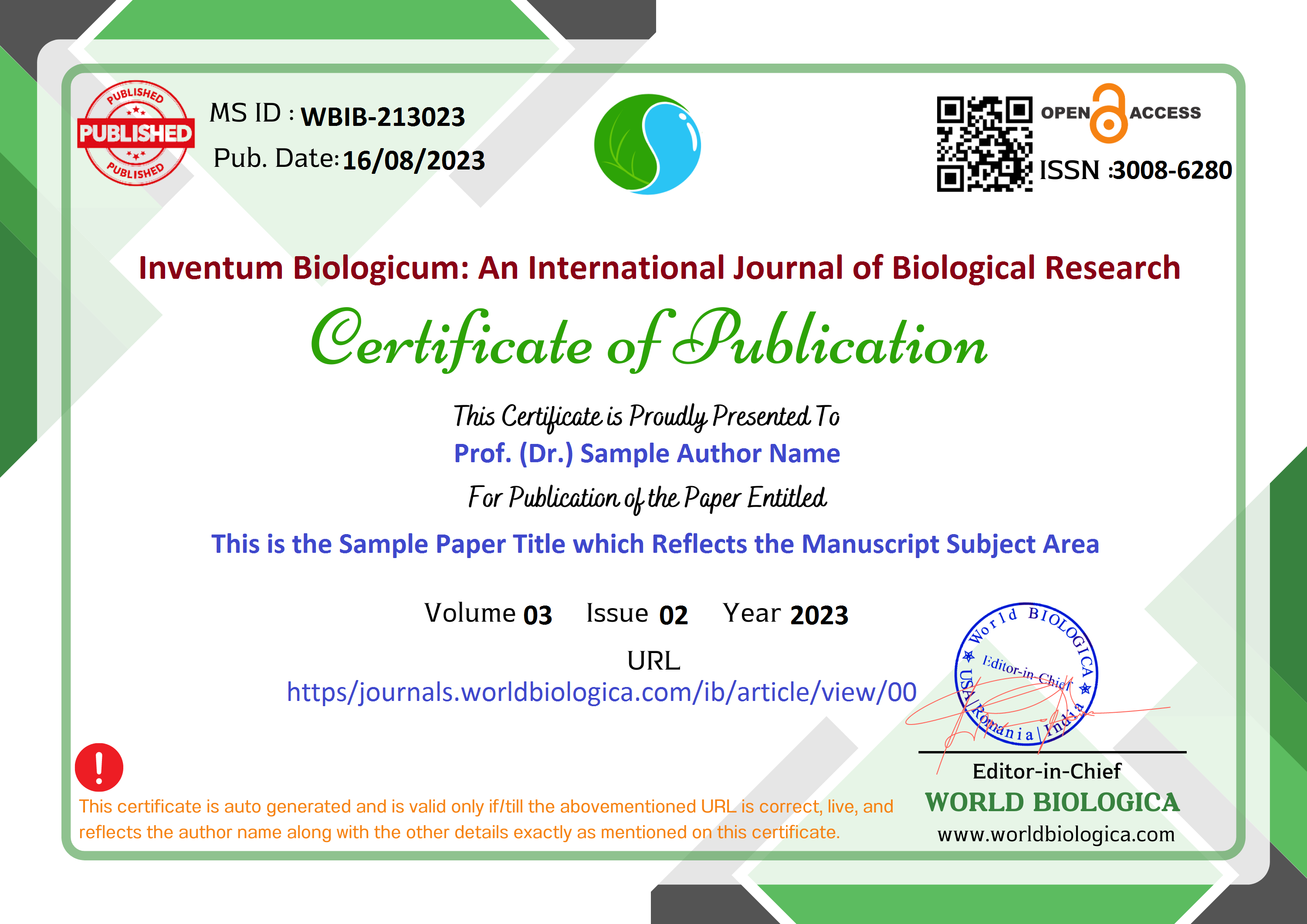Impacts of Sand Mining on Riverine Ecosystems
A Short Review
Keywords:
Sand mining, Ecosystems, River, Water quality, BiodiversityAbstract
Sand mining (aggregates regardless of particle size) from riverine ecosystems, leads to significant environmental impacts and is thus receiving increasing attention globally. The present paper summarizes the results of literature review addressing the impacts of sand mining on riverine ecosystems including river morphology, water quality, biodiversity, soil and landscape. The rapid rise in urbanization and construction of large-scale infrastructure projects are driving increasing demands for construction materials worldwide. The increasing demand of riverine resources (sand, gravel and boulder) is one of the main reasons for illegal mining that effects the health, physical process and different function of rivers, degradation of the riparian zone, degradation of aquatic and terrestrial biodiversity. The aim of the present paper was to provide an understanding of the impacts sand mining activities on riverine ecosystems and to guide future research directions.
Downloads
References
Babu, K. N., & Sreebha, S. (2004). Evaluation of nutrient budget of the rivers and adjoining back water–near shore systems of Kerala (unpublished report). Centre for Earth Science Studies, Thiruvananthapuram, India, p. 118.
Bagchi, P. (2010). Unregulated sand mining threatens Indian rivers. The Journal India Together, 21, 7-9.
Barman, B., Kumar, B., & Sarma, A. K. (2019). Impact of sand mining on alluvial channel flow characteristics. Ecological Engineering, 135, 36-44.
Kim, S., Yang, D. S., & Kim, Y. S. (2020). Distribution of metal contamination and grain size in the sediments of Nakdong River, Korea. Environmental Monitoring and Assessment, 192(8), 1-15.
Knighton, A. D. (1989). River adjustment to changes in sediment load: the effects of tin mining on the Ringarooma River, Tasmania, 1875–1984. Earth Surface Processes and Landforms, 14(4), 333-359.
Koehnken, L., Rintoul, M. S., Goichot, M., Tickner, D., Loftus, A. C., & Acreman, M. C. (2020). Impacts of riverine sand mining on freshwater ecosystems: A review of the scientific evidence and guidance for future research. River Research and Applications, 36(3), 362-370.
Kondolf, G. M. (1994). Geomorphic and environmental effects of instream gravel mining. Landscape and Urban planning, 28(2-3), 225-243.
Kuttipuran, M. (2006). RIVERS: Physical Modifications. Donnelley, Singapore.
Lawal, P.O. (2011). Effects of sand/gravel mining in Minna Emirate area of Nigeria on stakeholders. Journal of Sustainable Development, 4(1), 193.
Mwangi, S. (2007). Management of river systems in East Africa. Nairobi: Macmillan.
NGT (2021). Why unlawful sand mining in India needs good governance: NGT (2021). https://www.downtoearth.org.in/blog/mining/why-unlawful-sand-mining-in-india-needs-good-governance-78773; Accessed on 15 September 2022
Padmalal, D., & Maya, K. (2014). Impacts of river sand mining. In Sand Mining (pp. 31-56). Springer, Dordrecht.
Padmalal, D., Maya, K., Sreebha, S., & Sreeja, R. (2008). Environmental effects of river sand mining: a case from the river catchments of Vembanad lake, Southwest coast of India. Environmental geology, 54(4), 879-889.
Pereira, K. (2012). Illegal Sand Mining: The Unexamined Threat to Water Security in India.
Saviour, N. M. (2012). Environmental impact of soil and sand mining. International Journal of Science, Environment and Technology, 3, 221-216.
Schandl, H., Hatfield-Dodds, S., Wiedmann, T., Geschke, A., Cai, Y., West, J., ... & Owen, A. (2016). Decoupling global environmental pressure and economic growth: scenarios for energy use, materials use and carbon emissions. Journal of cleaner production, 132, 45-56.
Stebbins, M. (2006). Can gravel mining and water supply wells coexist. Maine: University of Maine, 109.
UNEP (United Nations Environment Programme) (2014). UNEP 2014 Annual Report. https://www.unep.org/resources/annual-report/unep-2014-annual-report; Accessed on 12 September 2022
Zou, W., Tolonen, K. T., Zhu, G., Qin, B., Zhang, Y., Cao, Z., ... & Gong, Z. (2019). Catastrophic effects of sand mining on macroinvertebrates in a large shallow lake with implications for management. Science of the Total Environment, 695, 133706.
Downloads
-
Download PDF
 Abstract Views: 446,
Abstract Views: 446,  Download PDF: 95
Download PDF: 95
Published
How to Cite
Issue
Section
License
Copyright (c) 2023 Inventum Biologicum: An International Journal of Biological Research

This work is licensed under a Creative Commons Attribution-NonCommercial-NoDerivatives 4.0 International License.

















